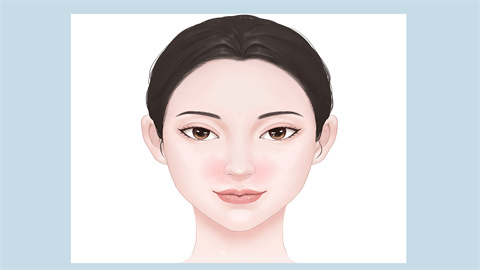Why is my face pale and lips purple, and what should I do?
Generally, pale face and purple lips may be caused by excessive fatigue, strenuous exercise, anemia, pneumonia, chronic obstructive pulmonary disease (COPD), and other conditions. It is recommended to seek timely medical advice and receive treatments such as general care and medication under a doctor's guidance. Detailed explanations are as follows:

1. Excessive Fatigue
Long-term overexertion places the body in a state of stress, increasing the burden on the heart. Cardiac output may become relatively insufficient, leading to reduced peripheral circulation, particularly affecting blood supply to the face and lips, which may result in paleness and cyanosis of the lips. It is important to maintain a balanced work-life schedule, ensure adequate sleep, avoid prolonged continuous work or study, and engage in appropriate rest and relaxation activities such as walking or yoga.
2. Strenuous Exercise
During intense physical activity, the body's oxygen demand increases sharply. The heart must work harder to meet this demand, and for a short time after exercising, cardiac function may remain in a stressed state, reducing peripheral blood flow, especially to the skin and lips, which can cause paleness and lip cyanosis. After intense exercise, appropriate cool-down activities such as slow walking or stretching should be performed to allow the body to gradually recover; abruptly stopping activity should be avoided. Adequate warm-up before exercise is also essential.
3. Anemia
Anemia is commonly caused by insufficient iron intake, chronic blood loss, or impaired blood cell production. In anemia, the number of red blood cells or hemoglobin levels decreases, reducing the blood's capacity to transport oxygen. Consequently, tissues and organs throughout the body—including the face and lips—may not receive sufficient oxygen, leading to symptoms such as paleness and lip cyanosis. Additional symptoms may include dizziness and fatigue. Treatment options include medications such as compound Ejiao syrup, vitamin C tablets, and folic acid tablets, as directed by a physician.
4. Pneumonia
Pneumonia is often caused by infection with bacteria, viruses, mycoplasma, or other pathogens. Lung inflammation reduces the surface area available for gas exchange and impairs ventilation and gas exchange functions, lowering blood oxygen levels and causing paleness and lip cyanosis. Symptoms may also include fever and chest pain. Patients may be advised by their doctor to take medications such as amoxicillin capsules, cefuroxime axetil tablets, or azithromycin tablets.
5. Chronic Obstructive Pulmonary Disease (COPD)
COPD is commonly caused by long-term smoking, air pollution, or recurrent respiratory infections. Patients experience airway obstruction and impaired ventilation and gas exchange, preventing oxygen from effectively entering the bloodstream and hindering the removal of carbon dioxide. This leads to decreased blood oxygen levels and increased levels of reduced hemoglobin, causing paleness and lip cyanosis. Symptoms may also include coughing and sputum production. Patients may follow medical advice to use medications such as salbutamol aerosol, ipratropium bromide aerosol, or ambroxol hydrochloride oral solution.
Maintaining a regular lifestyle and avoiding late nights and excessive fatigue can help preserve normal physiological functions and immunity. Additionally, regular health check-ups are recommended to detect hidden diseases early and allow timely intervention and treatment.




